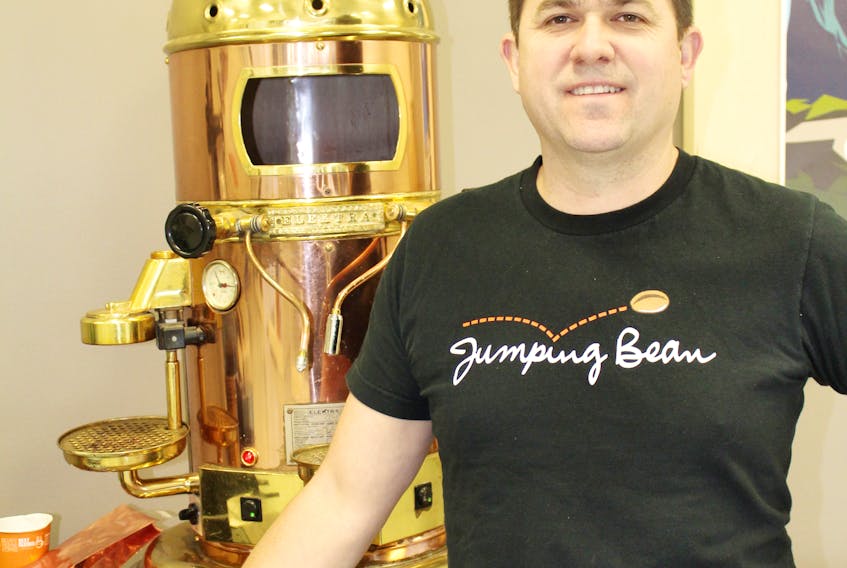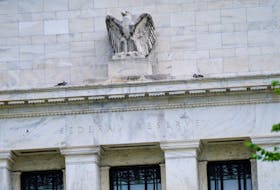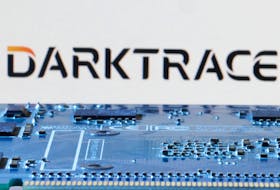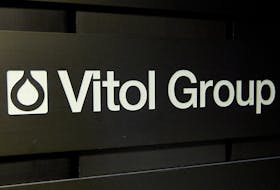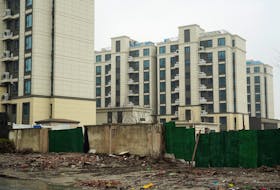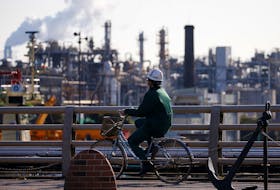Being environmentally conscious is something the world requires … now more than ever.
Jeff LeDrew and Jumping Bean Coffee are taking that mandate to the next level.
The company is using a new roasting process that will make it among the leaders in the world for the lowest percentage of carbon emissions of any of its commercial counterparts.
During a tour Thursday morning of its newly expanded facility in Donovans Industrial Park in Mount Pearl, LeDrew explained how Jumping Bean partnered with the College of the North Atlantic’s (CNA) industrial engagement unit and the roaster supplier to design, build and implement a roaster that, through a heated air system, will roast its beans, but further reduce its emissions by 10 per cent to an impressive 95 per cent, higher than any other of his counterparts in the industry.
Jumping Bean’s current roasting process — called Eco2Roast — has 85 per cent less emissions than conventional commercial coffee bean processes.
Leading the project are two recent graduates of the chemical process engineering technology program at CNA.
“Jumping Bean has always been committed to developing innovative solutions to bolster its ability to act as an environmentally responsible corporate citizen,” LeDrew said.
“With support from InnovateNL, we are able to undertake this major, innovative R&D project to help reduce energy consumption, increase process efficiency, and even further reduce our carbon footprint.”
In addition to the environmental impact, these advancements will enhance Jumping Bean’s reputation for innovation and environmental responsibility to the national stage.
“This will bring our home-grown Newfoundland and Labrador brand to the rest of Canada and beyond,” LeDrew said.
Jumping Bean is an independent organic coffee roaster, café system and grocery retail wholesaler that imports coffee beans from Ethiopia, Costa Rica, Sumatra and Guatemala.
Those beans are carefully blended and roasted to make the products that people in this province have come to know and love since its inception as a fundraising endeavor carried out by its founder and CEO for the Rotary Club of Newfoundland and Labrador in 2005.
From that small startup, to purchasing a roaster from Dominion in 2010, to where the company is today — designing and building its own roaster — Jumping Bean is entering the next phase of an ever-expanding market for its coffee and Floating Leaf tea brands.
“We have converted from a conduction roaster to a full heat and recovery convection roasting system,” LeDrew said.
“We are using a blown, forced air technology to heat the beans. All coffee is normally roasted at 232 C. To make it more environmentally efficient, the smoke produced in the roasting has to be burned off and is done so at 800 C.”
Sticking to the program
LeDrew said the new roaster can produce 120 kilograms of product in about 10 minutes, compared to 70 kilograms from its previous roaster, which is still in use.
He said the gases produced from roasting are recovered and recirculated over the beans.
“I don’t think it changes it. We think it makes the coffee better, its profile better,” he said.
LeDrew said he has not deviated from the original recipes he developed, quite literally at his kitchen table, since he started his roasting endeavors.
He has continued to take the origins of coffee, match them up with the percentages he has developed and maintain the tasting notes in that combination to get that original taste.
He said the wine industry does the same thing, taking three different grapes and blending them to arrive at one vintage.
Jumping Beans’ business model includes importing and roasting coffee at its plant in St. John’s, supplying independent and national retailers such as Loblaws, Costco, Sobeys, Belbins and Coleman’s with whole beans and single-serve pods, and running a system of corporate and franchise cafés.
It even entered the K Cup market in 2015 and sold 500,000 and to date in 2017, he is in excess of two million in sales.
InnovateNL contributed approximately $234,000 to support this research and development project.
“A small investment in a company for research, scaling up, or whatever a company may need, could lead to economic growth and prosperity,” Parliamentary Secretary of Tourism, Culture, Industry and Innovation Mark Browne said.
“We want to tour the facilities we are investing in to showcase the talented class of entrepreneurs we have in this province,” he added.
Jumping Bean Coffee timeline
Engineer and coffee lover Jeff LeDrew founded Jumping Bean Coffee in 2005.
A longtime home roaster, LeDrew had tinkered with his roaster to not only create signature tastes, but make the whole process more efficient overall.
Deeply involved with community and charity work, LeDrew created what would become the first Jumping Bean roast as part of a charity fundraiser for the Rotary Club.
This Rotary Roast was so popular, and demand for this premium coffee was so rich, that Jumping Bean Coffee was soon formed.
This is how it all happened:
2005 – Jeff LeDrew — a part of Rotary — launches Rotary Roast as fundraiser.
2005 – Jumping Bean founded, and becomes first certified fair-trade coffee roaster in Newfoundland.
2005 – Fair-trade organic coffee sold from single bin in an Oxfam store.
2006 – Independent stores in St. John’s area begin to pick up coffee.
2006 – Wholesale clients start to come online (restaurants, cafes, etc.).
2007 – Small retail location only at roaster.
2007 – Begins custom roasting for whole clients – independent cafes in Newfoundland.
2008 – Sobeys begins to stock and distribute Jumping Bean.
2009 – Roaster expansion underway and ECO2Roast® in development.
2009 – First cafe launched at Harvey Road (also head office).
2009 – Costco begins to stock Jumping Bean after Atlantic-Canadian Roadshows.
2010 – ECO2Roast and new expanded roasting facility launched.
2011 – National expansion efforts begin.
2011 – Franchising program begins with cafes in Gander and Grand-Falls/Windsor.
2011 – Cafe opens at Memorial University and St. John’s International Airport through food service partners.
2012 – Atlantic-Canadian expansion through distribution at Sobeys, Co-op, Costco, etc.
2013 – Target Canada picks up Jumping Bean on national scale.
2014 – New cafes open at TD Place, Water Street and TTCC.
2015 – Development and launch of single-serve Keurig compatible pods.
2015 – First metro franchise at Elizabeth Avenue.
2016 – New cafes launch at Hatcher House (Memorial University) and Atlantic Place.
2016 – Loblaws stocks Jumping Bean pods at 260 stores out to Ontario.
2016 – Join Canadian Franchise Association and become board member.
2016 – BPI-certified 100 per cent compostable single-serve pods on store shelves.
2017 – Now in Walmart, Loblaws, and Sobeys stores across Atlantic Canada.
2017 – Expand and centralize operation by moving to old Sears facility in Donovans Industrial Park.
2017 – Design, develop and build a new roaster for expansion of operation.
Source: www.jumpingbean.ca

